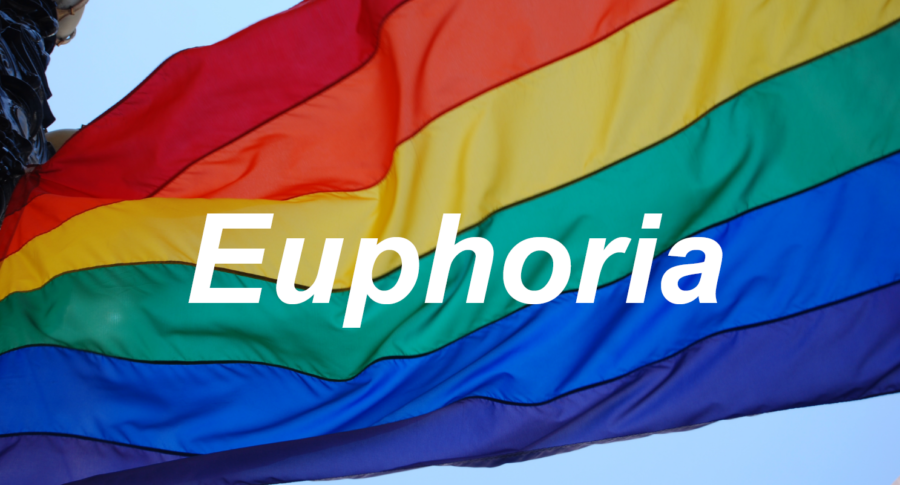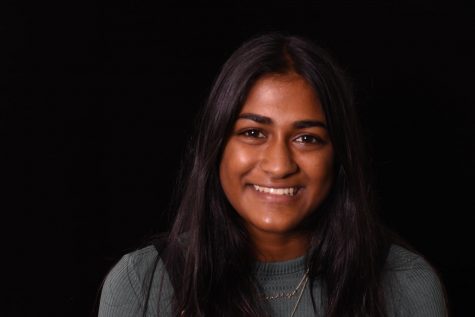LGBTQ Representation on the Rise in Media
October 20, 2019
LGBTQ representation in media has risen in relation to attention the LGBTQ community has received over the past few years.
“When I was in high school and first really [started] paying attention to who was in media or shows I was watching, I started noticing around the same time I understood myself as bisexual that there were not bisexual characters in movies, TV, anything. I didn’t see anyone like me anywhere,” said Danielle Serio, adviser of the Queer Alliance Club.
“For someone who has never experienced that, who has never seen themselves in media, it can be really disheartening and make you worry that there is something wrong with you or make you think there is a reason you are not around,” said Serio.
New media, however, is changing that with shows like The Politician, which features Ben Platt and has two open LGBTQ members. River Barkley, played by David Corenswet, is a bisexual high school student and Mcafee, played by Laura Dreyfruss who is lesbian and the right hand woman of the main actor. In another show, Euphoria, the main couple, played by Zendaya and Hunter Schafer, are also lesbian.
“In my own journey, I was kind of struggling to see if what I was feeling was normal because it was not seen in movies or TV shows,” said Lexi Guzik, president of the Queer Alliance club. “This generation has a better grasp on everything because it is becoming a norm.”
While there is now more representation for the LGBTQ community in television, not all representation is necessarily good.
“There is a trope that has always bothered me called bury your gaze. In bury your gaze, the idea is that whenever there is a new LGBT character, especially in TV, that person is going to die. It happens all the time, and once you start seeing it, it is impossible to stop seeing,” said Serio. “That has always been frustrating. You see someone and you want to get attached but you know it is not going to work out.”
This has happened in the TV series Pretty Little Liars, where Maya, played by Bianca Lawson, was killed off and was one of the main character’s first lesbian love interests.
“By killing off LGBT characters, either for shock value or to aid in the growth of the main character, what you really are saying is that the story is not about you,” said Serio.
Not only does she find herself seeing this very apparent issue through a screen, but it happens in plays as well.
“When we went to the Oregon Shakespeare Festival there was a Shakespeare play where a character was turned into a woman and a lesbian, and we were all stoked. We realized about halfway through that character was going to die, and it sucked the wind out of the experience. Yes you have the representation, but it’s a character that doesn’t really matter,” said Serio.
However, this is also beginning to change even at SJHHS with an upcoming gender blind casting of the Romeo and Juliet play.
“It is not enough just to be representative, you have to do it responsibly,”said Serio. She knows Romeo and Juliet will be different, because their director is responsible. “I’ve worked with Cambria Graff a lot, and this is something I know she takes very seriously. This is a trope that she knows and is familiar with.”
In addition to being constantly killed off, new members of the LGBTQ community have often been portrayed as the villains.
“I always feel like when gay people are added in they are the villains. If you are going to have gay people but making them do things that are wrong, that is not the way to go,” said Guzik.
Guzik sees this in the shows she watches sometimes, and is disheartened by it. For instance, in The Politician, a lesbian girl tries to poison the main character who is portrayed in a conniving light.
However, the character from The Politician is not entirely seen as a villain which shows a move towards better representation. While the character does make a bad decision, there is more depth to her than just that.
Serio also has seen more depth to her favorite characters, like Brooklyn 9-9’s character Rosa Diaz. She also believes that while there might be controversial portrayals of the LGBTQ group, there have been leaps and bounds made in representation, and that is undeniably positive.
“There is a lot more nuance given to LGBTQ characters, you are not just seeing them as the sexy gay couple or the villain, you are seeing them as fully realized people like other characters always have been,” said Serio.
The popular trend of queer coding in media has also not been seen as much anymore. Queer coding would often occur in Disney movies, that would give queer attributes to a certain character like Ursula, but have them be closeted in a way.
While new problems have risen from media portrayals, representation has increased, but should never be just the bare minimum. LGBTQ characters have finally started to develop tangible media presence, and are more prominent in films just as they are in society.


